#cornelia van rijn
Text




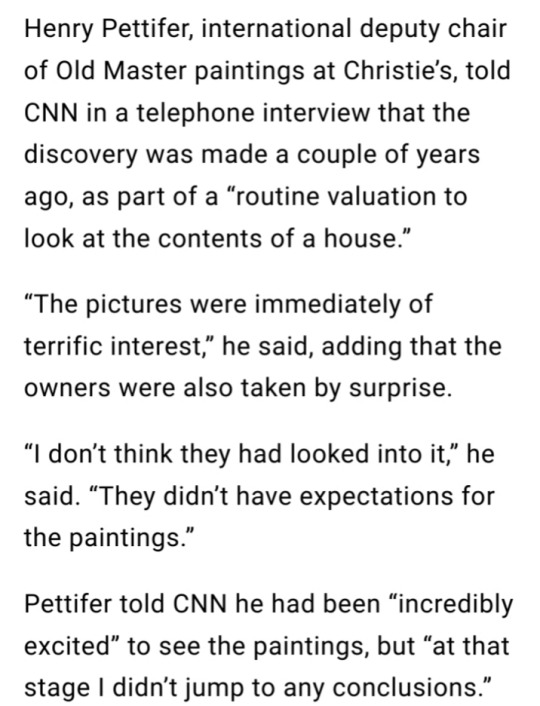


#Rembrandt#Jan Willemsz van der Pluym#Jaapgen Carels#Dominicus van der Pluym#Cornelia van Suytbroec#Christie’s#Marten ten Hove#Count Vincent Potocki#Baron d’Ivry#James Murray#Henry Pettifer#Rijksmuseum#paintings#art#Rembrandt Harmenszoon van Rijn#Dutch masters#Dutch Golden Age
28 notes
·
View notes
Text
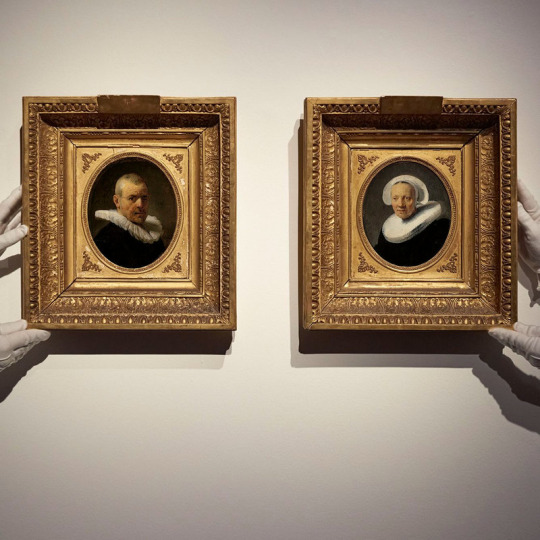
Rembrandt Harmensz. Van Rijn (Leiden 1606-1669 Amsterdam), Portrait of Jan Willemsz. van der Pluym (circa 1565-1644) and Portrait of Jaapgen Carels (1565-1640).
Exceptionally rare, the portraits of Jan Willemsz. van der Pluym (circa 1565-1644) and Jaapgen Carels (1565-1640), signed and dated 1635, are intimate portrayals of relatives of the artist and provide a unique insight into Rembrandt’s activity as a painter within his inner circle. With a virtually unbroken line of provenance, these pictures were acquired at Christie’s by an ancestor of the present owners almost two centuries ago and have remained completely unknown to scholars ever since. They return to Christie’s now after an extensive scholarly investigation and scientific analysis undertaken at the Rijksmuseum.
Small in scale and painted from life with Rembrandt’s characteristic virtuosity, these pictures offer a tender portrayal of a dignified, elderly couple who were related to the artist.
The sitters, wealthy Leiden plumber Jan Willemsz. van der Pluym (circa 1565-1644) and his wife Jaapgen Carels (1565-1640), were intimately connected with Rembrandt. The Van der Pluyms were a prominent family in Leiden, with their son Dominicus van der Pluym marrying Cornelia van Suytbroeck, the daughter of Rembrandt’s uncle on his mother’s side, Willem van Suytbroeck. Dominicus and Cornelia had one child, the artist Karel van der Pluym, who is thought to have trained with Rembrandt and included the artist’s only surviving heir, Titus, in his will. Karel’s uncle Willem Jansz van der Pluym also sat for Rembrandt's most finished portrait drawing. In 1635, the year these portraits were painted, Jan Willemsz. van der Pluym and Jaapgen Carels acquired a garden next to that of Rembrandt’s mother in Leiden.
PROVENANCE
The portraits have a remarkable, virtually unbroken line of provenance. They remained in the family of the sitters until 1760, when they were sold at auction in Amsterdam after the death of their great-great grandson Marten ten Hove (1683-1759). From there they passed to the collection of Count Vincent Potocki (circa 1740-1825) in Warsaw, before briefly entering the collection of Baron d’Ivry in Paris in 1820 and then James Murray, 1st Baron Glenlyon (1782-1837), who put them up for sale at Christie’s on 18 June in 1824, lot 76, listed as: ‘Rembrandt – very spirited and finely coloured’, where they were acquired. For the last two centuries they have remained in the same private UK collection.
Courtesy Alain Troung
7 notes
·
View notes
Text
My portraiture photography inspired by Rembrandt
My photographs I would like to create in studio, were inspired by these 2 paintings.
Saskia with flower

Saskia with a Flower is a 1641 oil on canvas portrait by Rembrandt of his wife Saskia van Uylenburgh, now in the Gemäldegalerie Alte Meister in Dresden. It is also known as Saskia with a Red Flower, Saskia with a Carnation or Saskia as Flora.

Hendrickje Stoffels (1626 – 21 July 1663) was the long time partner of Rembrandt. The couple were unable to marry because of the financial settlement linked to the will of Rembrandt's deceased wife Saskia, but they remained together until Hendrickje's death. In 1654 she gave birth to Rembrandt's daughter Cornelia. In the later years of their relationship Hendrickje managed Rembrandt's business affairs together with the painter's son Titus.
Hendrickje is widely believed to have modelled for several of Rembrandt's works and to be depicted in some Tronie portraits. However, her role as Rembrandt's model is disputed by some critics.
Relationship with Rembrandt
Hendrickje obtained work as Rembrandt's housekeeper, and seems to have lived with him from approximately 1647, at first as a maid, but fast becoming much more. This led to an acrimonious fallout with Rembrandt's previous live-in lover Geertje Dircx, who sued Rembrandt for breach of promise in 1649, and demanded maintenance payments from him. Hendrickje testified in the case, confirming that a financial agreement had been reached with Geertje. In the same year Hendrickje returned to Bredevoort for the summer (possibly with Rembrandt accompanying her), and is there mentioned as a witness to a christening in the Bredevoorts church records. The Eighty Years' War was past, and peace was finally reaching even the eastern Netherlands.
In 1654, when she was pregnant with Rembrandt's daughter, Hendrickje had to appear before the Council of the Reformed Church for "living in sin" with Rembrandt, who was a widower and 20 years her senior. She admitted to "unwedded cohabitation" with Rembrandt and was banned from receiving communion. On 30 October 1654, the couple's daughter Cornelia van Rijn was baptized in the Oude Kerk in Amsterdam. Rembrandt and Hendrickje lived together as common law husband and wife until her death in 1663.
Initially, Rembrandt's unwillingness to marry Hendrickje had a pecuniary motive: by marrying her he would have forfeited the inheritance of his first wife Saskia van Uylenburgh. Even with this inheritance he had major financial problems, but without it he would have been bankrupt. But then in 1655, Titus – the son he had with Saskia – turned 14, and thereby eligible by law to make his will. Rembrandt immediately made sure that Titus installed him as his only heir and by that he outwitted Saskia. Still, he did not marry Hendrickje.
As Rembrandt's dealer
By 1656 Rembrandt was forced to declare bankruptcy. In 1658 he lost his house, and he, Hendrickje, Cornelia and Titus moved into rented property in the Jordaan. In the same year, Hendrickje, who got along well with Titus, opened an art shop with Titus’ help where she sold Rembrandt’s paintings. In order to protect him from his money lenders Hendrickje and Titus became his employers.[9] In this way his former maid Hendrickje Stoffels had become his boss – at least officially. Her biographer Christoph Driessen believes that Rembrandt’s noticeable productivity in the early 1660s was caused by the obvious support Hendrickje was rendering him. She was organizing his life for him and prevented his complete downfall after his bankruptcy.
In May 1663, the plague arrived in Amsterdam and killed thousands, especially at the end of the year. It is not clear Hendrickje was a victim of the epidemic as she was the only one who was buried in the Westerkerk in Amsterdam on 24 July 1663.
In Rembrandt's art
Hendrickje may have been a model for
Bathsheba at Her Bath (1654).
Though there are no paintings that are explicitly identified as depictions of Hendrickje, there are a number of portraits, nudes and other images which appear to depict the same woman, who is often assumed to be Hendrickje. A portrait in the National Gallery, London is identified as her "based on the knowledge of the sitter's relationship with the artist, and the informality and affection with which she is represented. She is seated wearing a fur wrap and jewellery. There are a number of other portrait-like images that appear to depict the same woman. However, Rembrandt scholar Eric Sluijter is sceptical of attempts to identify Hendrickje in Rembrandt's work, writing that,
If one compares the large number of etchings, drawings and paintings with the purpose of recognizing Hendrickje it appears more often than not that there is little mutual resemblance between all the candidates. It is surprising how, still, in recent art historical literature numerous works are identified as Hendrickje Stoffels as a matter of course.
Sluijter suggests that the broad similarity between the faces of women in Rembrandt's paintings suggest that he tended to portray an "ideal type".
Hendrickje is also traditionally identified as the model for a number of nudes, especially the painting Bathsheba at Her Bath. She would have been 28 at the time of the painting. Sluijter has proposed otherwise, stating that Rembrandt would be very unlikely to portray his partner's own recognisable face on nudes to be sold publicly.



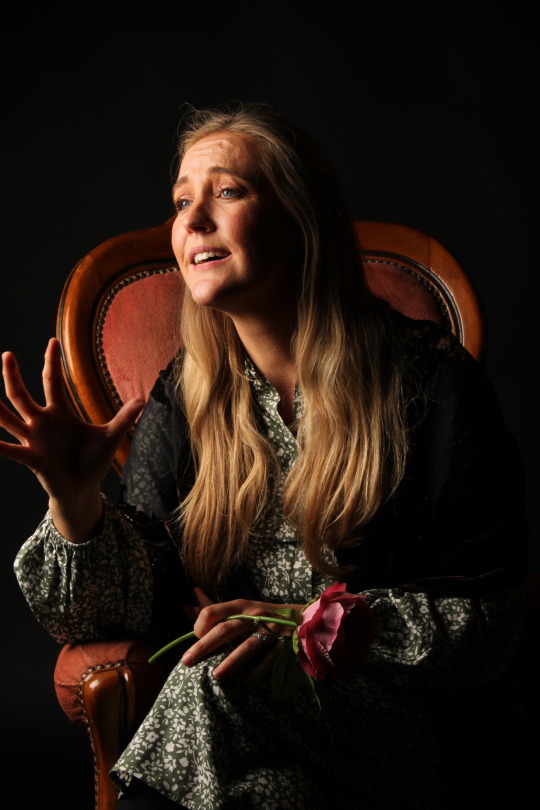


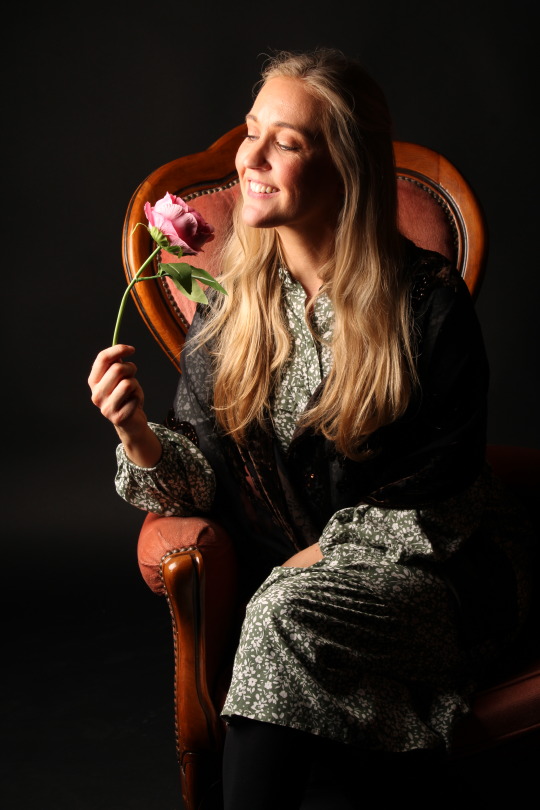
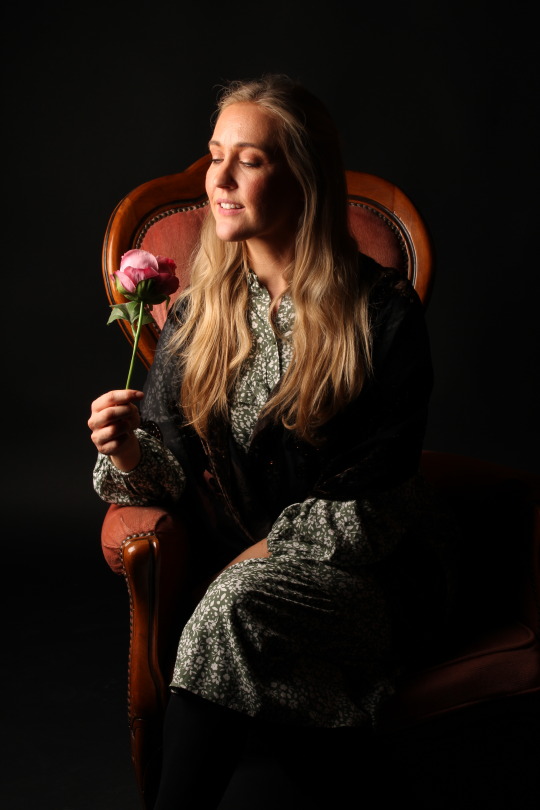
0 notes
Text
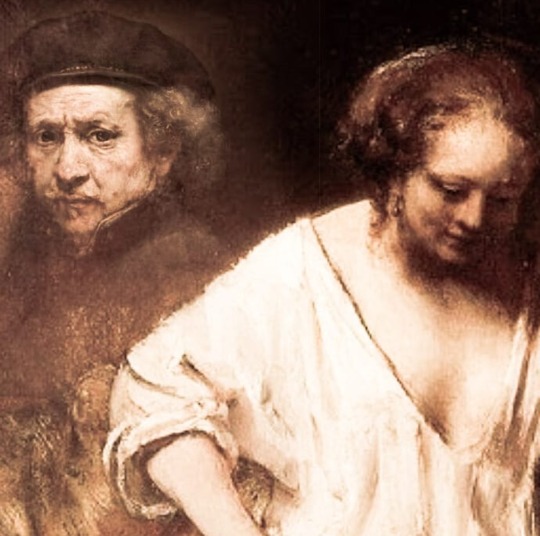
"Dutch painter Rembrandt van Rijn was a very sad artist. Only in the beginning had he an easy life, then it went hard,and he did not paint laughing people in his maturity."(Maxim Kantor, a Russian painter,writer, and essayist, in his book 'Thistle. Philosophy of Oil Painting' )
Hendrickje was a black-eyed small young lady,graceful and a little bit plump,attracting the attention of Rembrandt. She was two times younger the artist,famous all over Holland as the 'Apelles of Amsterdam', whom Hendrickje was going to serve.
According to art historian Melissa Ricketts:
"Hendrickje was a modest common servant who became a lover of Rembrandt. She was a model for Rembrandt’s drawings and some paintings, for instance, for his 'Woman in Bed'. His artworks demonstrated sexuality of the model and the artist was evidently fascinated by her,depicting the details of her young flesh. Rembrandt had never hidden his relations with Geertje from Hendrickje,and she had never been boring and quarrelsome."
She also posed as a model for one of his most valuable paintings,Bathsheba.
She had been ignoring the rumors behind her back for a long time. The neighbors called her a prostitute and a fallen woman because of her relations with the artist. By 1654, the couple had faced a serious problem. Hendrickje became pregnant at the beginning of the year, and in June her pregnancy became noticeable; Hendrickje and Rembrandt were summoned to the Church council. The charge of the Church council was "that she had committed the acts of a whore with Rembrandt the painter". She admitted this and was banned from receiving communion. The verdict of the Church was that the woman had to be convicted of sin and quit her illegal relations with Rembrandt.
Hendrickje Stoffels died in 1663 at the age of 38; she devoted 15 years of her life to Rembrandt. The painter buried her and outlived this lover of him as well. Just mind it when you are looking at his late self-portraits with the face of a hard bitten and experienced old man who loved and suffered a lot.
#perioddramaedit#history#edit#history edit#art#rembrandt#rembrandt van rijn#cornelia van rijn#chiaroscuro#baroque#barroco#Hendrickje Stoffels#history art#art history#dutch#batsheba#danae#dutch golden age#portrait detail#baroque aesthetic#baroque art#baroque artist#painting
26 notes
·
View notes
Photo

KAMROOZ ARAM
on the ancient arts of Iran
Achaemenid (Iran, Susa). Bricks with a palmette motif, ca. 6th–4th century B.C. Ceramic, glaze. The Metropolitan Museum of Art, Rogers Fund, 1948 (48.98.20a–c)
The Artist Project
Vito Acconci on Gerrit Rietveld's Zig Zag Stoel
Ann Agee on the Villeroy Harlequin Family
Diana Al-Hadid on the cubiculum from the villa of P. Fannius Synistor at Boscoreale
Ghada Amer on an Iranian tile panel, Garden Gathering
Kamrooz Aram on the ancient arts of Iran
Cory Arcangel on the harpsichord
John Baldessari on Philip Guston's Stationary Figure
Barry X Ball on an Egyptian fragment of a queen’s face
Ali Banisadr on Hieronymus Bosch's The Adoration of the Magi
Dia Batal on a Syrian tile panel with calligraphic inscription
Zoe Beloff on Édouard Manet's Civil War (Guerre Civile)
Dawoud Bey on Roy DeCarava
Nayland Blake on boli
Barbara Bloom on Vilhelm Hammershøi's Moonlight, Strandgade 30
Andrea Bowers on Howardena Pindell
Mark Bradford on Clyfford Still
Cecily Brown on medieval sculptures of the Madonna and Child
Luis Camnitzer on Giovanni Battista Piranesi's etchings
Nick Cave on Kuba cloths
Alejandro Cesarco on Gallery 907
Enrique Chagoya on Goya's Los Caprichos
Roz Chast on Italian Renaissance painting
Willie Cole on Ci Wara sculpture
George Condo on Claude Monet's The Path through the Irises
Petah Coyne on a Japanese outer robe with Mount Hōrai
Njideka Akunyili CROSBY on Georges Seurat's Embroidery; The Artist's Mother
John Currin on Ludovico Carracci's The Lamentation
Moyra Davey on a rosary terminal bead with lovers and Death's head
Edmund de Waal on an ewer in the shape of a Tibetan monk's cap
Thomas Demand on the Gubbio studiolo
Jacob El Hanani on the Mishneh Torah, by Master of the Barbo Missal
Teresita Fernández on Precolumbian gold
Spencer Finch on William Michael Harnett's The Artist's Letter Rack
Eric Fischl on Max Beckmann's Beginning
Roland Flexner on Jacques de Gheyn II's Vanitas Still Life
Walton Ford on Jan van Eyck and workshop's The Last Judgment
Natalie Frank on Käthe Kollwitz
LaToya Ruby FRAZIER on Gordon Parks's Red Jackson
Suzan Frecon on Duccio di Buoninsegna's Madonna and Child
Adam Fuss on a marble grave stele of a little girl
Maureen Gallace on Paul Cézanne's still life paintings with apples
Jeffrey Gibson on Vanuatu slit gongs
Nan Goldin on Julia Margaret Cameron
Wenda Gu on Robert Motherwell's Lyric Suite
Ann Hamilton on a Bamana marionette
Jane Hammond on snapshots and vernacular photography
Zarina Hashmi on Arabic calligraphy
Sheila Hicks on The Organ of Mary, a prayer book by Ethiopian scribe Baselyos
Rashid Johnson on Robert Frank
Y.Z. Kami on Egyptian mummy portraits
Deborah Kass on Athenian vases
Nina Katchadourian on Early Netherlandish portraiture
Alex Katz on Franz Kline's Black, White, and Gray
Jeff Koons on Roman sculpture
An-My Lê on Eugène Atget's Cuisine
Il Lee on Rembrandt van Rijn's portraits
Lee Mingwei on Chinese ceremonial robes
Lee Ufan on the Moon Jar
Glenn Ligon on The Great Bieri
Lin Tianmiao on Alex Katz's Black and Brown Blouse
Kalup Linzy on Édouard Manet
Robert Longo on Jackson Pollock's Autumn Rhythm (Number 30)
Nicola López on works on paper
Nalini Malani on Hanuman Bearing the Mountaintop with Medicinal Herbs
Kerry James MARSHALL on Jean Auguste Dominique Ingres's Odalisque in Grisaille
Josiah McElheny on Horace Pippin
Laura McPhee on Pieter Bruegel the Elder's The Harvesters
Josephine Meckseper on George Tooker's Government Bureau
Julie Mehretu on Velázquez's Juan de Pareja
Alexander Melamid on Ernest Meissonier's 1807, Friedland
Mariko Mori on Botticelli's The Annunciation
Vik Muniz on The Henry R. Luce Center for the Study of American Art
Wangechi Mutu on Egon Schiele
James Nares on Chinese calligraphy
Catherine Opie on the Louis XIV bedroom
Cornelia Parker on Robert Capa's The Falling Soldier
Izhar Patkin on Shiva as Lord of Dance
Sheila Pepe on European armor
Raymond Pettibon on Joseph Mallord William Turner
Sopheap Pich on Vincent van Gogh's drawings
Robert Polidori on Jules Bastien-Lepage's Joan of Arc
Rona Pondick on Egyptian sculpture fragments
Liliana Porter on Jacometto's Portrait of a Young Man
Wilfredo Prieto on Auguste Rodin's sculptures
Rashid Rana on Umberto Boccioni's Unique Forms of Continuity in Space
Krishna Reddy on Henry Moore
Matthew Ritchie on The Triumph of Fame over Death
Dorothea Rockburne on an ancient Near Eastern head of a ruler
Alexis Rockman on Martin Johnson Heade's Hummingbird and Passionflowers
Annabeth Rosen on ceramic deer figurines
Martha Rosler on The Met Cloisters
Tom Sachs on the Shaker Retiring Room
David Salle on Marsden Hartley
Carolee Schneemann on Cycladic female figures
Dana Schutz on Balthus's The Mountain
Arlene Shechet on a bronze statuette of a veiled and masked dancer
James Siena on the Buddha of Medicine Bhaishajyaguru
Katrín Sigurdardóttir on the Hôtel de Cabris, Grasse
Shahzia Sikander on Persian miniature painting
Joan Snyder on Florine Stettheimer's Cathedrals paintings
Pat Steir on the Kongo Power Figure
Thomas Struth on Chinese Buddhist sculpture
Hiroshi Sugimoto on Bamboo in the Four Seasons, attributed to Tosa Mitsunobu
Eve Sussman on William Eggleston
Swoon on Honoré Daumier's The Third-Class Carriage
Sarah Sze on the Tomb of Perneb
Paul Tazewell on Anthony van Dyck's portraits
Wayne Thiebaud on Rosa Bonheur's The Horse Fair
Hank Willis THOMAS on a daguerreotype button
Mickalene Thomas on Seydou Keïta
Fred Tomaselli on Guru Dragpo
Jacques Villeglé on Georges Braque and Pablo Picasso
Mary Weatherford on Goya's Manuel Osorio Manrique de Zuñiga
William Wegman on Walker Evans's postcard collection
Kehinde Wiley on John Singer Sargent
Betty Woodman on a Minoan terracotta larnax
Xu Bing on Jean-François Millet's Haystacks: Autumn
Dustin Yellin on ancient Near Eastern cylinder seals
Lisa Yuskavage on Édouard Vuillard's The Green Interior
Zhang Xiaogang on El Greco's The Vision of Saint John
25 notes
·
View notes
Text
Sabes quien fue Rembrandt Van Rijn?
Fue el artista más importante de Holanda nació en 1606 en Leida y era hijo de un acaudalado molinero. A la edad de dieciocho años, Rembrandt Harmenszoon van Rijn se trasladó a Ámsterdam para trabajar para Pieter Lastman, un pintor conocido de la época. Seis meses después abrió su propio estudio en Leida. Ningún otro artista fue capaz de jugar con la luz y la sombra como lo hacía Rembrandt. Enseguida se hizo popular como pintor y decidió regresar a la próspera ciudad de Ámsterdam en 1631. Al cabo de tres años se casó con Saskia van Uylenborch con quien tuvo 4 hijos, el primero en 1635 para desdicha del pintor sus primeros 3 hijos fallecían a los días o semanas de nacidos, fue su cuarto hijo Tito el único que sobrevivió. Pero lamentablemente Saskia falleció al año de que Tito nació, dejando establecido que Rembrandt no podría volver a casarse, Rembrandt tuvo un amorío con la niñera de Tito pero ella quería algo serio, difamo a rembrandt diciendo que le prometió casarse, rembrandt la hizo pasar por loca y la encerró en un manicomio. Luego tuvo un amorío con su ama de llaves con quien tuvo una hija llamada Cornelia, recibió una carta de la iglesia por su infracción pero el ya no pertenecía a la iglesia, por esos años pinto Jesús y la mujer adultera. Rembrant murió a los 63 años dejando numerosas obras de arte que se exponen en prestigiosos museos del mundo. Mas adelante te daremos a conocer algunas de sus obras.
2 notes
·
View notes
Photo
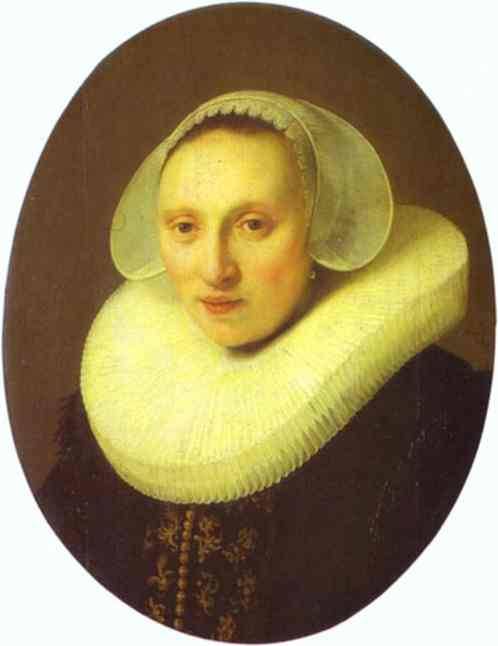
Portrait of Cornelia Pronck, Wife of Albert Cuyper, at the age of 33, 1633, Rembrandt Van Rijn
Size: 60x47 cm
Medium: oil, board
6 notes
·
View notes
Link
Share
Post on facebook wall
Share on twitter
Share via Email
Pin to Pinterest
Share on Google Plus
Should you ever find yourself challenged as you loiter in Amsterdam's famous red light district, here's a valid excuse. Explain you're searching for the houses where Rembrandt van Rijn lived, here in the city's piquant canal quarter. Only one abode has survived, Museum Het Rembrandthuis, or Rembrandt House Museum.
And expect that it, like every other Rembrandt site in Amsterdam, will be well-booked during 2019, "The Year of Rembrandt" since it's the 350th anniversary of the painter's death.
Thanks to new technology, we're able to enjoy "old masters" like never before. Not just audio guides and digital downloads but the kind of ultra-sensitive lighting that enables Holland's national museum of art and history, the Rijksmuseum, to show every one of its Rembrandt collection – 22 paintings, 60 drawings and more than 300 prints – together for the first time (until June 10, 2019).
From July, the Rijksmuseum will also be the focus of one of the most extraordinary projects in art history. Rembrandt's most famous work, The Night Watch, will undergo its first restoration since it was slashed in 1975 with a bread knife. During the restoration, the huge painting will be encased in a glass chamber allowing visitors to still admire the painting while digital viewers around the world can follow the painstaking restoration.
No-one would be more surprised by The Night Watch's enduring fame than Rembrandt. Like Mozart, he was buried in a pauper's grave despite previous celebrity and royal adoration. But unlike well-travelled Mozart, the Dutchman rarely ventured outside Amsterdam.
So the cheapest way of learning about arguably the most influential artist between Leonardo da Vinci and Pablo Picasso is to take a self-guided "Rembrandt walk" around the Amsterdam he might still recognise.
Our starting point is the Rembrandt House Museum on Jodenbreestraat. The artist and his wife, Saskia, moved here in 1639, at the height of Rembrandt's fame and financial success. It's a substantial wooden house. And though it's in the heart of historical Amsterdam, it was just a couple of canals from the fields where the artist took his sketchbooks to draw.
Saskia and Rembrandt were engaged at the Oude Kerk in 1633. Nine years later, she was buried there, aged 29, having given birth to four children. Each daughter died in infancy and they are buried at another of Amsterdam's famous churches, Zuiderkerk (the first Protestant church build after the expulsion of the Catholic clergy in 1578). Only their son Titus, born in 1641, lived until adulthood and he died before his father. For the latter part of his life, Rembrandt lived with his former maid, Hendrickje Stoffels, mother of their daughter, Cornelia.
At the Rembrandt House Museum you'll discover how prodigious, famous and wealthy Rembrandt was in his prime. Yet he went bankrupt, moving to cheaper accommodation. It's not hard to work out why. His private collection, now reassembled, consists of things a wealthy, educated royal might amass, charging to the public purse.
Advertisement
Once you've finished in the museum and purchased the self-guided walk booklet, turn left and cross Oude Schans, one of Amsterdam's oldest canals, to 59 Anthoniebreestraat. It's now a nondescript apartment block. But for six months in 1625, young Rembrandt, newly arrived from his birthplace of Leiden, was apprenticed to the painter Pieter Lastman who lived here. Lastman was highly regarded for his "history paintings", scenes from the Bible and classical mythology, a constant theme in Rembrandt's own work.
My favourites on the walk include Zuiderkerk ("southern church"). Its dominating tower, finished in 1614, remains much as it was when Rembrandt woke up to its four bells ringing each month. And how could you not love the social hub that is still Nieuwmarkt, anchored by De Waag? This multi-towered, multi-entranced and multi-purpose "weigh house" is where the young Rembrandt was invited to paint his breakthrough canvas, The Anatomy Lesson of Dr Nicolaes Tulp.
Then there's the site, now a hotel, where Rembrandt was commissioned by "the Company of Captain Frans Banning Cocq and Lieutenant Willem van Ruytenburch"? Don't recognise their names? They were the officers of what we'd now call a ceremonial civil guard. They became The Night Watch, by mistake, because Rembrandt's colours darkened over the centuries. So who knows what this year's analysis will bring?
One thing is sure. The circular walking tour will bring you back to Oude Schans. Rembrandt Corner, the restaurant overlooking the canal and next to Rembrandt House Museum, is an unashamed tourist trap. But it still serves the traditional Dutch meals Rembrandt enjoyed (split pea and sausage soup or the Hollandse stamppot: mashed potato with spinach, sausage, meatball, gravy and egg on the side). You'll notice the cumulative effect of such repasts on Rembrandt's girth in his self-portraits.
TRIP NOTES
Steve Meacham travelled at his own expense.
MORE
traveller.com.au/netherlands
iamsterdam.com
FLY
Several airlines offer a single-stop flight from Sydney (sometimes Melbourne and Brisbane) to Amsterdam. These include Etihad/KLM, see etihad.com/en-au/; Qantas/China Airlines, see qantas.com/au; and Garuda Indonesia (via Jakarta), see garuda-indonesia.com/au
VISIT
Rembrandt House Museum, adults €14, children €5. See rembrandthuis.nl
The Rijksmuseum, adults €20, under-18 free. See rijksmuseum.nl/en/the-year-of-rembrandt.
EAT
Rembrandt Corner with specialties such as Hollandse stampotten or bitterballen. See rembrandtcorner.nl
from traveller.com.au
0 notes
Quote
Two girls about my age--nearly fourteen--walk arm in arm down the frost-etched bricks of the sidewalk on the other side of the canal.
Lynn Cullen, I Am Rembrandt's Daughter
#lynn cullen#i am rembrandt's daughter#cornelia van rijn#rembrandt van rijn#carel#neel#books#ya lit#historical fiction#reading#writing#literature#quotes#fiction
0 notes
Photo

Portrait of Cornelia Pronck, Wife of Albert Cuyper, at the age of 33, 1633, Rembrandt Van Rijn
Size: 60x47 cm
Medium: oil, board
7 notes
·
View notes
Photo

Portrait of Cornelia Pronck, Wife of Albert Cuyper, at the age of 33, 1633, Rembrandt Van Rijn
Size: 60x47 cm
Medium: oil, board
10 notes
·
View notes
Photo
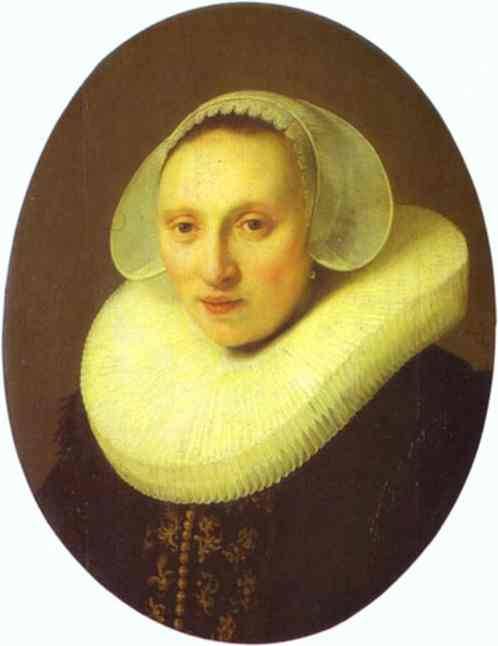
Portrait of Cornelia Pronck, Wife of Albert Cuyper, at the age of 33, 1633, Rembrandt Van Rijn
Size: 60x47 cm
Medium: oil, board
7 notes
·
View notes
Photo
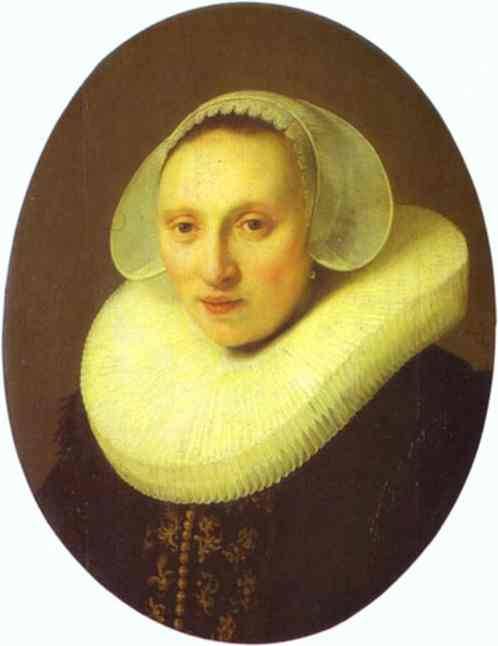
Portrait of Cornelia Pronck, Wife of Albert Cuyper, at the age of 33 via Rembrandt Van Rijn
Size: 60x47 cm
Medium: oil, board
4 notes
·
View notes
Photo

Portrait of Cornelia Pronck, Wife of Albert Cuyper, at the age of 33 via Rembrandt Van Rijn
Size: 60x47 cm
Medium: oil, board
1 note
·
View note